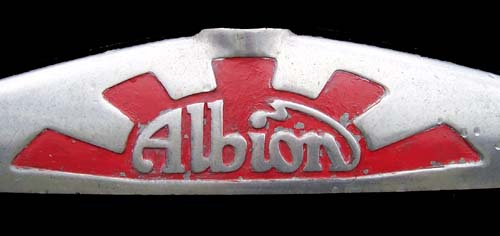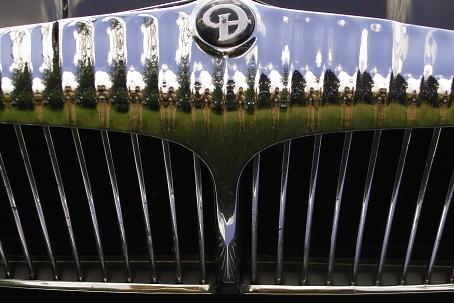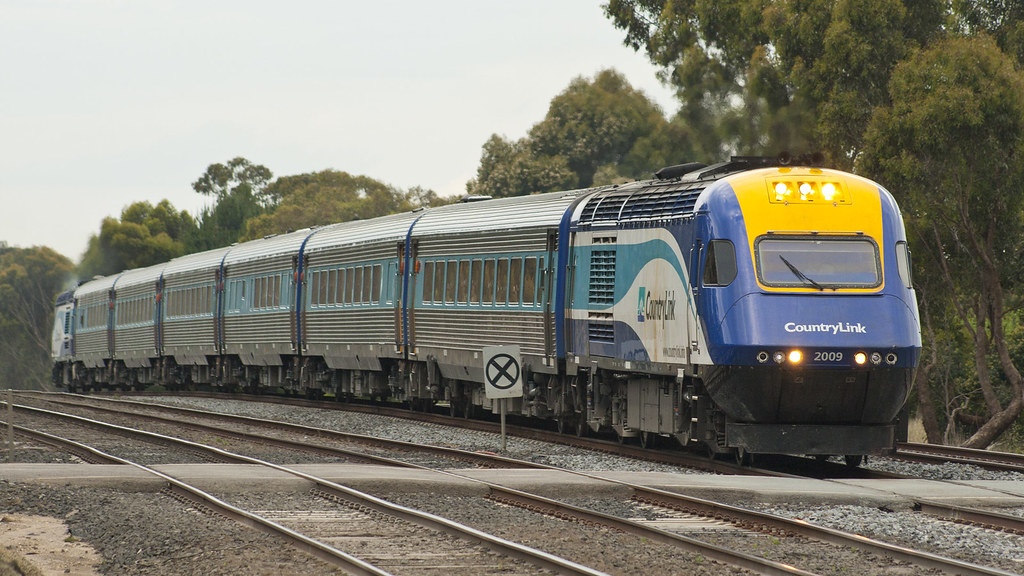|
Boltons (bus Manufacturer)
Boltons was an Australian bus bodybuilder in West Perth. History In 1888, Isaac Bolton founded a coach building business as Bolton & Sons in Fremantle. Isaac retired in 1912, with sons Alfred and Leonard taking over the business."A Centenary of Boltons Coach and Body Building from 1888 to 1989" ''Australian Bus Panorama'' issue 29/6 May 2014 pages 5-7 In 1926, the business of Daniel White & Co was purchased. In June 1936, a new factory on land purchased from Holden in West Perth was opened by the Minister for Industry, Albert Hawke. In 1948, the company passed to Leonard's two sons. In the early 1950s, Boltons bodied 40 Sunbeam trolleybuses. During this period, Boltons established a relationship with Commonwealth Engineering. Boltons bodied over 400 buses and coaches for the Metropolitan Transport Trust on AEC, Albion, Daimler, Guy and Leyland chassis. It also bodied coaches for the Western Australian Government Railways Western Australian Government Railway ... [...More Info...] [...Related Items...] OR: [Wikipedia] [Google] [Baidu] |
West Perth, Western Australia
West Perth is an inner suburb of Perth, the capital city of Western Australia. Geography Formerly an exclusive enclave for wealthy merchants and politicians, the West Perth suburb is now part of the inner mixed zone, and has predominantly office blocks which have displaced residential buildings. The suburb has a relatively high proportion of miners, consultants, and especially medical specialists as compared with the Perth CBD. Streets such as Colin Street, Ord Street, and Outram Street have a significant percentage of office and high density residential buildings. Most retail outlets are located on Hay Street, which is the main commercial zone for the suburb, and these are focused on serving the office population. Closer to the CBD, the eastern edge of the suburb features both the Watertown brand outlet complex and the City West complex. This location was home to the Perth Metropolitan Markets from 1929 to 1989, when they moved to Canning Vale. Livability In 2018, West ... [...More Info...] [...Related Items...] OR: [Wikipedia] [Google] [Baidu] |
Albion Motors
Albion Motors was a Scottish automobile and commercial vehicle manufacturer. Founded in 1899, Albion Motors was purchased by Leyland Motors in 1951. Vehicles continued to be manufactured under the Albion brand until 1972, after which they continued to be produced, but were sold under the Leyland brand. Vehicle production at the former Albion factory in the Scotstoun area of Glasgow, Scotland, continued until 1980. History Originally known as ''Albion Motor Car Company Ltd'', the company was founded in 1899 by Thomas Blackwood Murray and Norman Osborne Fulton (both of whom had previously been involved in Arrol-Johnston). Murray's father, John Lamb Murray mortgaged the Heavyside estate in Biggar, South Lanarkshire, to provide the initial capital. They were joined a couple of years later by John F Henderson who provided additional capital. The factory was originally on the first floor of a building in Finnieston Street, Glasgow and had only seven employees. In 1903 t ... [...More Info...] [...Related Items...] OR: [Wikipedia] [Google] [Baidu] |
1888 Establishments In Australia
In Germany, 1888 is known as the Year of the Three Emperors. Currently, it is the year that, when written in Roman numerals, has the most digits (13). The next year that also has 13 digits is the year 2388. The record will be surpassed as late as 2888, which has 14 digits. Events January–March * January 3 – The 91-centimeter telescope at Lick Observatory in California is first used. * January 12 – The Schoolhouse Blizzard hits Dakota Territory, the states of Montana, Minnesota, Nebraska, Kansas, and Texas, leaving 235 dead, many of them children on their way home from school. * January 13 – The National Geographic Society is founded in Washington, D.C. * January 21 – The Amateur Athletic Union is founded by William Buckingham Curtis in the United States. * January 26 – The Lawn Tennis Association is founded in England. * February 6 – Gillis Bildt becomes Prime Minister of Sweden (1888–1889). * February 27 – In West Orange ... [...More Info...] [...Related Items...] OR: [Wikipedia] [Google] [Baidu] |
Bus Manufacturers Of Australia
A bus (contracted from omnibus, with variants multibus, motorbus, autobus, etc.) is a road vehicle that carries significantly more passengers than an average car or van. It is most commonly used in public transport, but is also in use for charter purposes, or through private ownership. Although the average bus carries between 30 and 100 passengers, some buses have a capacity of up to 300 passengers. The most common type is the single-deck rigid bus, with double-decker and articulated buses carrying larger loads, and midibuses and minibuses carrying smaller loads. Coaches are used for longer-distance services. Many types of buses, such as city transit buses and inter-city coaches, charge a fare. Other types, such as elementary or secondary school buses or shuttle buses within a post-secondary education campus, are free. In many jurisdictions, bus drivers require a special large vehicle licence above and beyond a regular driving licence. Buses may be used for scheduled bus ... [...More Info...] [...Related Items...] OR: [Wikipedia] [Google] [Baidu] |
Western Australian Government Railways
Western Australian Government Railways (WAGR) was the operator of railway services in the state of Western Australia between October 1890 and June 2003. Owned by the state government, it was renamed a number of times to reflect extra responsibility for tram and ferry operations that it assumed and later relinquished. Westrail was the trading name of WAGR from September 1975 until December 2000, when the WAGR's freight division and the Westrail name and logo were privatised. Its freight operations were privatised in December 2000 with the remaining passenger operations transferred to the Public Transport Authority in July 2003. History of operations The WAGR had its origins in 1879, when the Department of Works & Railways was established. The first WAGR line opened on 26 July 1879 between Geraldton and Northampton. It was followed by the Eastern Railway from Fremantle to Guildford via Perth on 1 March 1881. The WAGR adopted the narrow gauge of to reduce construction co ... [...More Info...] [...Related Items...] OR: [Wikipedia] [Google] [Baidu] |
Leyland Motors
Leyland Motors Limited (later known as the Leyland Motor Corporation) was a British vehicle manufacturer of lorries, buses and trolleybuses. The company diversified into car manufacturing with its acquisitions of Triumph and Rover in 1960 and 1967, respectively. It gave its name to the British Leyland Motor Corporation, formed when it merged with British Motor Holdings in 1968, to become British Leyland after being nationalised. British Leyland later changed its name to simply BL, then in 1986 to Rover Group. After the various vehicle manufacturing businesses of BL and its successors went defunct or were divested, the following marques survived: Jaguar and Land Rover, now built by Jaguar Land Rover owned by TATA Motors; MG, now built by MG Motor, and Mini, now built by BMW. The truck building operation survived largely intact as Leyland Trucks, a subsidiary of Paccar. History Beginning Leyland Motors has a long history dating from 1896, when the Sumner and Spurrier fa ... [...More Info...] [...Related Items...] OR: [Wikipedia] [Google] [Baidu] |
Guy Motors
Guy Motors was a Wolverhampton-based vehicle manufacturer that produced cars, lorries, buses and trolleybuses. The company was founded by Sydney S. Guy (1885–1971) who was born in Kings Heath, Birmingham. Guy Motors operated out of its Fallings Park factory from 1914 to 1982, playing an important role in the development of the British motor industry. History Foundation and the First World War Sydney S. Guy registered Guy Motors Limited on Saturday 30 May 1914, the same day he departed his position as works manager at the Wolverhampton company, Sunbeam. A factory was built on the site at Fallings Park, Wolverhampton. and by September 1914 production was underway on the newly designed 30 cwt lorry. This employed a much lighter form of pressed steel frame, unlike the more commonly used heavy rolled steel channel frames of the time. This made the vehicle able to cross difficult terrain and a 14-seat post bus built based on the design was used for crossing the Scottish Highlands. ... [...More Info...] [...Related Items...] OR: [Wikipedia] [Google] [Baidu] |
Daimler Company
The Daimler Company Limited ( ), prior to 1910 The Daimler Motor Company Limited, was an independent British motor vehicle manufacturer founded in London by H. J. Lawson in 1896, which set up its manufacturing base in Coventry. The company bought the right to the use of the Daimler name simultaneously from Gottlieb Daimler and Daimler-Motoren-Gesellschaft of Cannstatt, Germany. After early financial difficulty and a reorganisation of the company in 1904, the Daimler Motor Company was purchased by Birmingham Small Arms Company (BSA) in 1910, which also made cars under its own name before the Second World War. In 1933, BSA bought the Lanchester Motor Company and made it a subsidiary of Daimler Company. Daimler was awarded a Royal Warrant to provide cars to the British monarch in 1902; it lost this privilege in the 1950s after being supplanted by Rolls-Royce. Daimler occasionally used alternative technology: the Knight engine which it further developed in the early twenti ... [...More Info...] [...Related Items...] OR: [Wikipedia] [Google] [Baidu] |
Associated Equipment Company
Associated Equipment Company (AEC) was a British vehicle manufacturer that built buses, motorcoaches and trucks from 1912 until 1979. The name Associated Equipment Company was hardly ever used; instead it traded under the AEC and ACLO brands. During World War One, AEC was the most prolific British lorry manufacturer; after building London's buses before the great war. History Inception The London General Omnibus Company (LGOC) was founded in 1855 to amalgamate and regulate the horse-drawn omnibus services then operating in London. The company began producing motor omnibuses for its own use in 1909 with the X-type designed by its chief motor engineer, Frank Searle, at works in Blackhorse Lane, Walthamstow. The X-type was followed by Searle's B-type design, considered to be one of the first mass-produced commercial vehicles. In 1912, LGOC was taken over by the Underground Group of companies, which at that time owned most of the London Underground, and extensive tram oper ... [...More Info...] [...Related Items...] OR: [Wikipedia] [Google] [Baidu] |
Bus Manufacturing
Bus manufacturing, a sector of the automotive industry, manufactures buses and coaches. History Bus manufacturing had its earliest origins in carriage building. Other bus manufacturers had their origins in truck manufacturing. Historically, chassis designs were shared between trucks and buses, but in later years specific bus chassis have been developed, and the midibus introduced a lighter weight bus chassis than normal trucks. Bus manufacture historically developed as chassis and body builds. Often, large bus operators or authorities would maintain separate stocks of bus bodies, and would routinely refurbish buses in a central works, and refurbished chassis might receive a different body. One of the first integral type bus designs combining the body and chassis was the AEC Routemaster. In the 1980s, many minibuses were built by applying bus bodies to van chassis, so called 'van derived' buses. Many of these have been replaced by purpose built designs, although for smaller ... [...More Info...] [...Related Items...] OR: [Wikipedia] [Google] [Baidu] |
Transperth
Transperth is the brand name of the public transport system serving the city and suburban areas of Perth, the state capital of Western Australia. It is managed by the Public Transport Authority (PTA), a state government organisation. Train operations are done by Transperth Train Operations, a division of the PTA. Bus operations are contracted out to Swan Transit, Path Transit and Transdev. Ferry operations are contracted out to Captain Cook Cruises. History In August 1986, the Metropolitan Transport Trust was rebranded as Transperth. In February 1995 the provision of ferry services was contracted to Captain Cook Cruises."Competitive Tendering" ''Australian Bus Panorama'' issue 10/6 February 1995 page 20. In September 1993, the Government announced Transperth would be corporatised and opened up to competition. In February 1995 in preparation for privatisation, Transperth was restructured with the operation of services transferred to MetroBus, with ownership of the buses ... [...More Info...] [...Related Items...] OR: [Wikipedia] [Google] [Baidu] |
Commonwealth Engineering
Commonwealth Engineering (often shortened to Com-Eng, later Comeng [ ]) was an Australian engineering company that designed and built railway locomotives, rolling stock and trams. History Smith and Waddington, the predecessor to Commonwealth Engineering, was founded in 1921, in the Sydney suburb of Camperdown, New South Wales, Camperdown, as a body builder for custom motor cars. It went bankrupt in the Great Depression in Australia, Depression, and was reformed as Waddingtons Body Works and the main factory was moved to Granville, New South Wales, Granville, after a fire in the main workshop. The Government of Australia took control of the company during World War II as the company was in serious financial difficulties but had many government orders in its books. The government purchased a controlling stake in the company in 1946 and changed the name to Commonwealth Engineering. In 1949 a factory was established in Rocklea, Queensland. This was followed in 1952 a plant in Basse ... [...More Info...] [...Related Items...] OR: [Wikipedia] [Google] [Baidu] |








.jpg)
